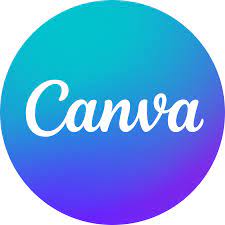Creation Multi-Tool
Canva Pro is FREE for Students and Teachers!
@LisaBerghoff/@MrKimDHS
One of my favorite podcasts, How I Built This, recently did an episode with Tim Leatherman in which he described the journey of his leatherman multitool. He was looking for a simple solution to the problem of often needing a variety of tools that he could keep in his pocket. This episode really stuck with me as I am often looking for efficiency of time, effort, and space. The notion that this one little tool could do so many things is very appealing. In addition, the story of perseverance and belief in what he was doing makes Tim Leatherman's story an incredible lesson in entrepreneurship. It took him seven years to sell one Leatherman Tool and his company is now worth over $100 million.
Anyway, I really want to talk to you about Canva. By the way, there's a How I Built This episode about Melanie Perkins, founder of Canva, too! It's from 2019. Canva is the Leatherman Tool of the design world and for teachers and students, the Canva Pro account is FREE!
We have featured Canva before on this blog. The first post was back in 2015. The features that I wrote about back then still hold true but now Canva has so much more to offer in terms of creativity and design.
What can you and your students create with Canva?
I talk to so many teachers who are designing lessons where students are creators and not just consumers of information. This is great! Canva is a wonderful tool for this because it is so versatile. You can create everything from infographics and posters to videos, social media posts, mind maps, flashcards, newsletters, and more. The drag and drop system makes it simple to create beautiful designs with a very short learning curve.
How do you get your free account?
In the near future, you will only be required to sign in with your school Google account. Until then, go to https://www.canva.com/edu-signup/ and enter your information. You can then create a link for your students as well.
Where should you get started with Canva?
First, think about the goal. What is it you want your students to learn, understand, or be able to do?
Canva will give you suggestions but you can also click the Templates tab at the top of your screen.
There are thousands of templates to try and there is a search bar so you can find what you need without wasting a ton of time.
No need to stare at a blank screen! This is perfect for students who struggle with getting started. When you click Templates, you can browse by subject, or by project type. You will also see trending templates.
Since many of you have probably already used Canva for digital design or print materials. I thought I would use this post to highlight the newer video editing features in Canva. From the home screen where it says What Will You Design you can choose video. From there you will have some easy to assemble video options. These are great for students and will work on any device they are using. There is nothing to download!
You can choose from templates that you will drag and drop and then customize as much as you like.
When you are finished with your video, click the share button. You have so many options for sharing your video creation including getting a sharable link. Also, you can set the permissions just like on Google docs, so you can determine how private or public you want your video to be. If you want to embed, you can get the html code and add it to your website or blog page.
What will you create with Canva Pro?
















